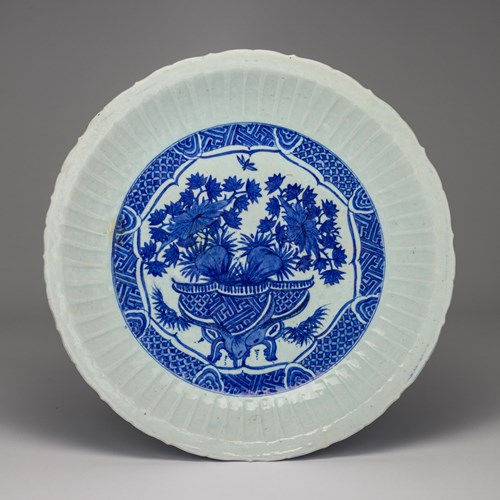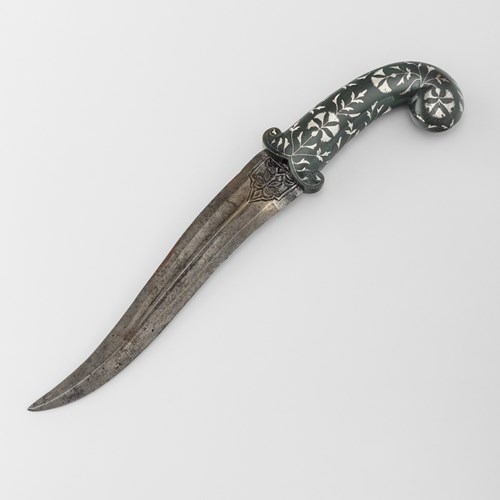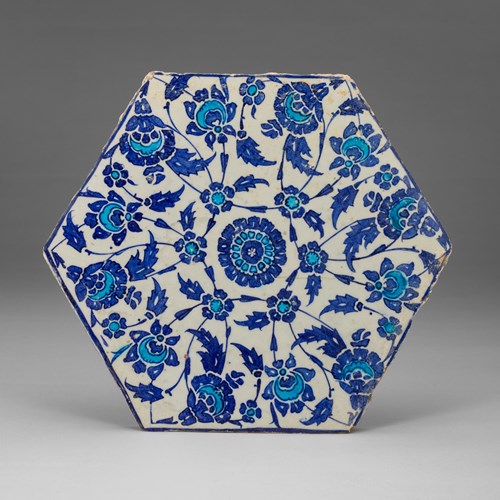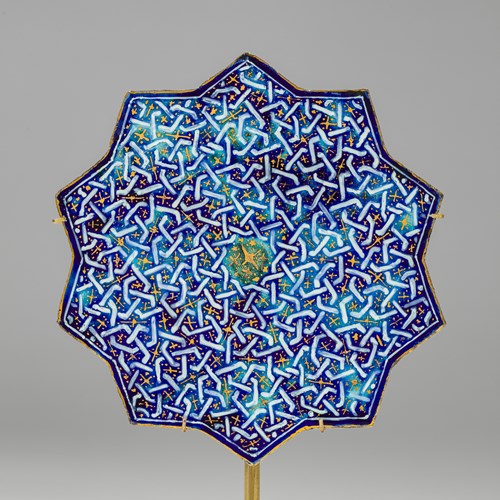Marketplace
A Study of a Greater Coucal (Centropus sinensis)
A Study of a Greater Coucal (Centropus sinensis)
Date c. 1800–1850
Period 19th century
Origin Calcutta, India
Medium Opaque colours and ink on paper
Dimension 47.3 x 32.1 cm (18⁵/₈ x 12⁵/₈ inches)
Made for the European market
Stock No.: A5325
At just under half a metre in length, the impressive figure of a greater coucal is an arresting bird. A cloak of cinnamon wing feathers wraps around the black plumage of the body, while the head and neck shimmer exquisitely with blacks suffused with cobalt. The soft grey chest feathers lead to charcoal tones on the belly and the magnificent claws have a black patent gloss.
Below the rufus barred wings, the paint ceases and reveals the pencil underdrawing of the tail feathers. There is seldom opportunity to consider the nature of the artist in this manner and we must therefore embrace any window into this secretive realm. The outlines of feathers are suggested through subtle and delicate lines, there is a great fluidity in the hand and a lively quality to the markings. All of these meritorious attributes combine to indicate the work of a tremendously experienced and gifted individual.
Artists such as Ustad Mansur (active 1590–1624) in the atelier of the Mughal Emperor Jahangir (1569–1627) produced exceptionally fine portraits of birds and a tradition of natural history painting marked by exquisite detail and refined painterly technique was fully established. Imbued with these attributes, the most accomplished Company School artists were able to combine Mughal mastery with the requirements of their European patrons, as watercolour was introduced and subjects appeared on plain backgrounds, in the manner of taxonomic recording. The present work is a fine example of this marriage of traditions. The bird has been extremely well considered and the result is well proportioned, technically accurate and a fine example of its type. Moreover, the bird’s face is expressive, its beak glistens and feathers descend in a shimmering cascade. The resultant image is not merely a scientific recording but an ebullient celebration of this magnificent bird by a truly masterful painter.
This study is numbered ‘418’ and inscribed in Persian ‘mahuk (greater coucal)’.
Bibliography:
Welch. Stuart Cary. Room for Wonder: Indian Painting During the British Period 1760–1880. American Federation of Arts, 1978.
Archer, Mildred. Natural History Drawings in the India Office Library. Commonwealth Relations Office, London, 1962.
Stock No.: A5325
At just under half a metre in length, the impressive figure of a greater coucal is an arresting bird. A cloak of cinnamon wing feathers wraps around the black plumage of the body, while the head and neck shimmer exquisitely with blacks suffused with cobalt. The soft grey chest feathers lead to charcoal tones on the belly and the magnificent claws have a black patent gloss.
Below the rufus barred wings, the paint ceases and reveals the pencil underdrawing of the tail feathers. There is seldom opportunity to consider the nature of the artist in this manner and we must therefore embrace any window into this secretive realm. The outlines of feathers are suggested through subtle and delicate lines, there is a great fluidity in the hand and a lively quality to the markings. All of these meritorious attributes combine to indicate the work of a tremendously experienced and gifted individual.
Artists such as Ustad Mansur (active 1590–1624) in the atelier of the Mughal Emperor Jahangir (1569–1627) produced exceptionally fine portraits of birds and a tradition of natural history painting marked by exquisite detail and refined painterly technique was fully established. Imbued with these attributes, the most accomplished Company School artists were able to combine Mughal mastery with the requirements of their European patrons, as watercolour was introduced and subjects appeared on plain backgrounds, in the manner of taxonomic recording. The present work is a fine example of this marriage of traditions. The bird has been extremely well considered and the result is well proportioned, technically accurate and a fine example of its type. Moreover, the bird’s face is expressive, its beak glistens and feathers descend in a shimmering cascade. The resultant image is not merely a scientific recording but an ebullient celebration of this magnificent bird by a truly masterful painter.
This study is numbered ‘418’ and inscribed in Persian ‘mahuk (greater coucal)’.
Bibliography:
Welch. Stuart Cary. Room for Wonder: Indian Painting During the British Period 1760–1880. American Federation of Arts, 1978.
Archer, Mildred. Natural History Drawings in the India Office Library. Commonwealth Relations Office, London, 1962.
Date: c. 1800–1850
Period: 19th century
Origin: Calcutta, India
Medium: Opaque colours and ink on paper
Dimension: 47.3 x 32.1 cm (18⁵/₈ x 12⁵/₈ inches)
Provenance: Paul Beilby Lawley Thompson, 1st Baron Wenlock (1784–1852)
More artworks from the Gallery


_T638839371737193916.jpg?width=2000&height=2000&mode=max&scale=both&qlt=90)






